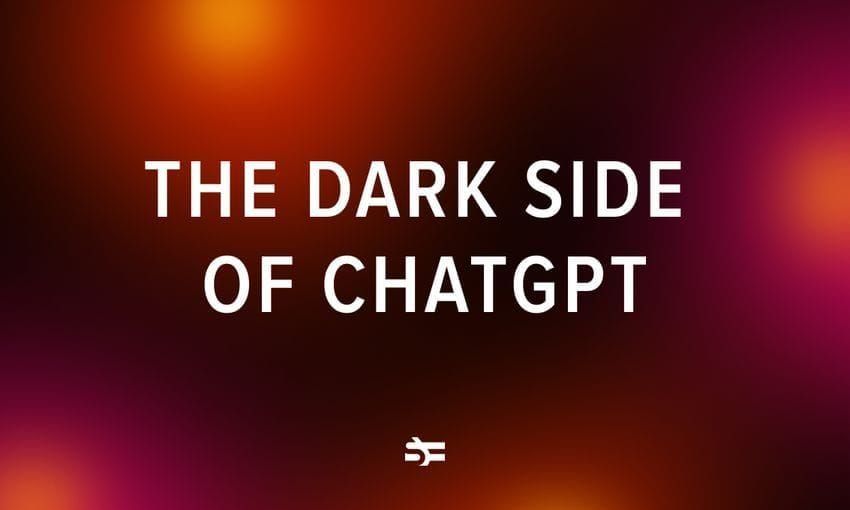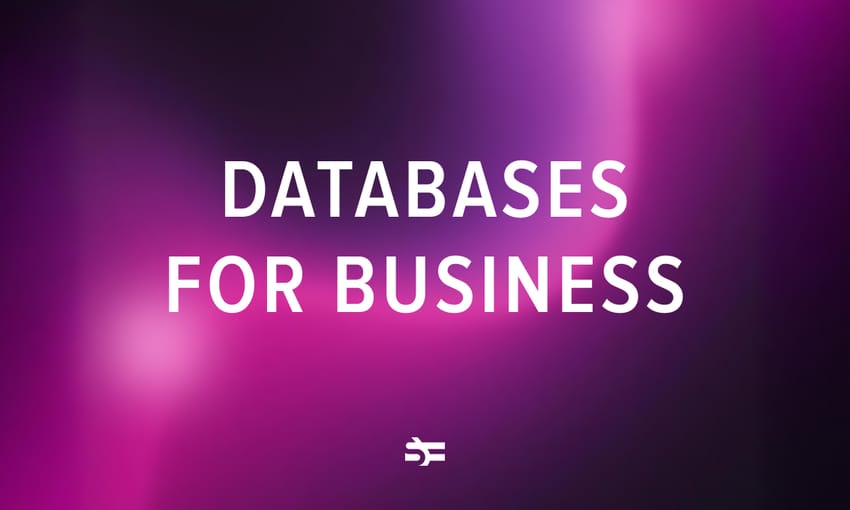The release of ChatGPT has urged numerous scientific labs to create or improve their own AI chatbots, leading to what we can call a chatbot race. Today, there are numerous options available on the market, both free and paid. In this blog post, we explore the capabilities of ChatGPt alternatives, along with pros and cons.
Chatbots can be used in many areas for various tasks. Their ability to rapidly respond to user inquiries makes them well-suited for customer service roles. They can also translate text between different languages. As virtual assistants, chatbots help you stay organized by managing schedules, task lists, and important information.
For creative tasks like writing, chatbots provide feedback to improve quality and suggest enhancements. In education, they can facilitate research by providing supplemental learning materials and search directions.
To make your work easier with chatbots, you should be aware of their strengths and weaknesses, resulting from their architecture and datasets that were used for their training. This way, you can employ them most efficiently.
What are AI chatbots?
AI chatbots are sophisticated conversational tools based on ML and natural language processing techniques that can understand and respond to human speech. Chatbots are trained on vast amounts of internet content, enabling them to generate text that fulfills user requests.
AI chatbots can engage in deep, multi-stage interactions with users, for example, guiding customers through technical issues by offering detailed step-by-step instructions until the problem is resolved. Being able to assist with e-commerce, offer information, schedule appointments, aid in language learning, and function as virtual assistants, they have applications in entertainment, healthcare, financial services, education, lead generation, surveys, travel assistance, and more. Check out this post to learn about the models behind ChatGPT.
Current efforts by leading developers are focused on personalization, aiming to bring chatbots to a more advanced level where they can serve as companions and even friends to users rather than just performing tasks in a question-and-answer mode.
Top 5 ChatGPT alternatives
ChatGPT has a number of serious competitors, including Microsoft Bing, Google Bard, OpenAI Playground, Amazon CodeWhisperer, and GitHub Copilot. Below we look at each of them in detail.
Microsoft Bing
Microsoft’s Bing AI is now a serious rival to ChatGPT. Using an updated version of ChatGPT, known initially as the “Prometheus model” but later revealed to be GPT-4, Bing’s search engine has become much better nowadays.
In the current version of Bing, a chat mode lets users ask questions based on their web searches. It’s like conversing with your search engine, asking about things you find, and getting more detailed information. Microsoft also added a bunch of new features, including better visual responses, more accurate search results, and a tool called Bing Image Creator.
Just like ChatGPT, you can use Bing to plan trips, find recipes, ask for advice, and do a lot of other things. And the best part? It used to be available only through a waitlist, but now everyone can try it out.
Pros
- Has internet access
- Offers references to original sources
- Driven by OpenAI’s LLM
Cons
- Has limit on inquiries
- Can be somewhat slow
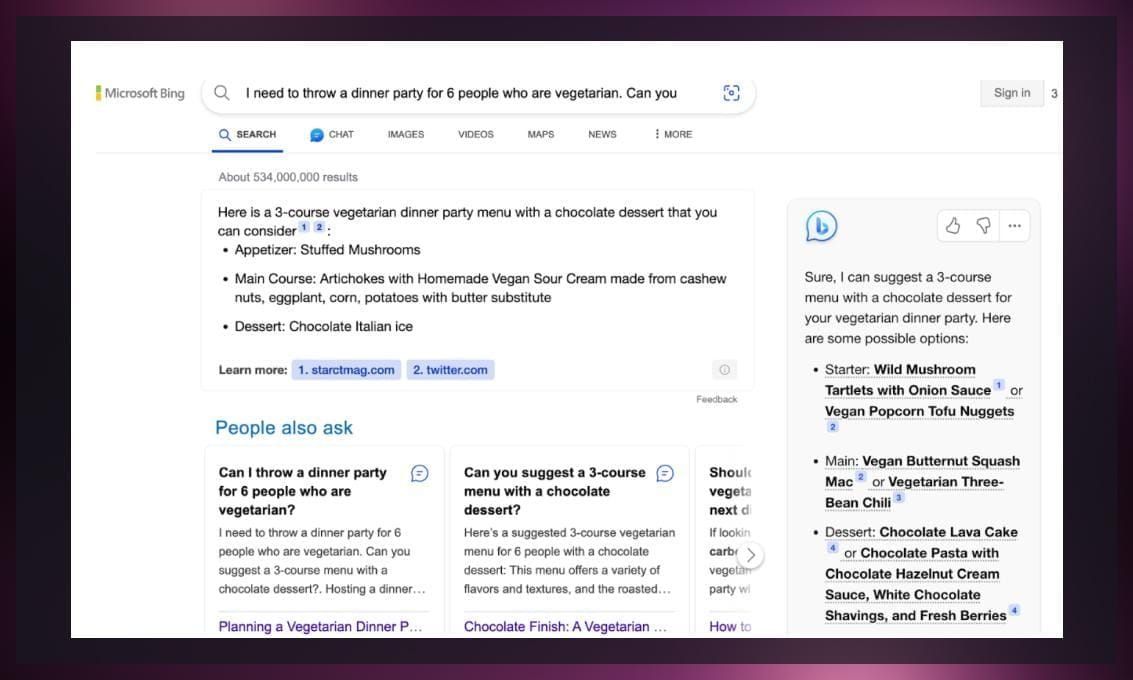
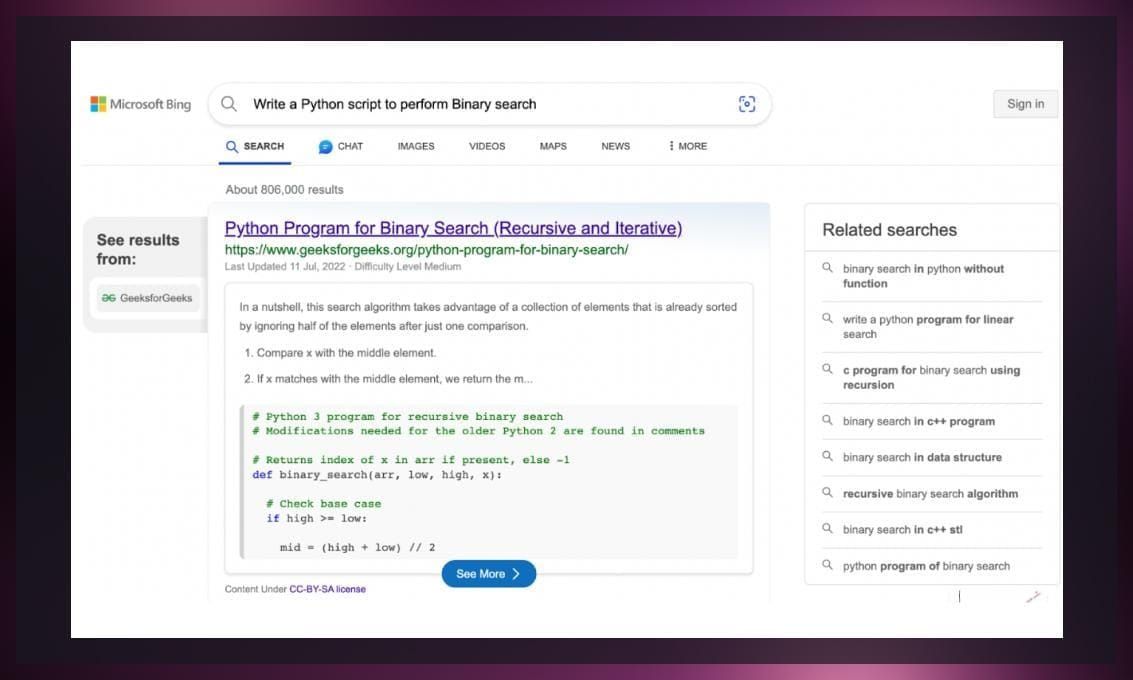
Google Bard
Powered by PaLM 2, Google’s Bard is a prominent player among conversational AI chat platforms. One of its standout features is the “Search with Google” option.
Unlike other chatbots, Bard doesn’t rely on the GPT series model. Instead, it is based on a streamlined iteration of LaMDA. Bard is good at generating coherent writing and can be used as a text assistant. It is helpful for composing and refining documents—ranging from resumes and cover letters to professional outlines and beyond.
Bard is free to use but requires a minimum age of 18. Also, you should have your own Google account, or your administrator should allow Bard access to your Google Workspace account.
Pros
- Can switch between various conversational modes
- Conducts searches based on keywords
- Provides references for information
- Gives accurate responses
Cons
- Requires improvement in terms of speed
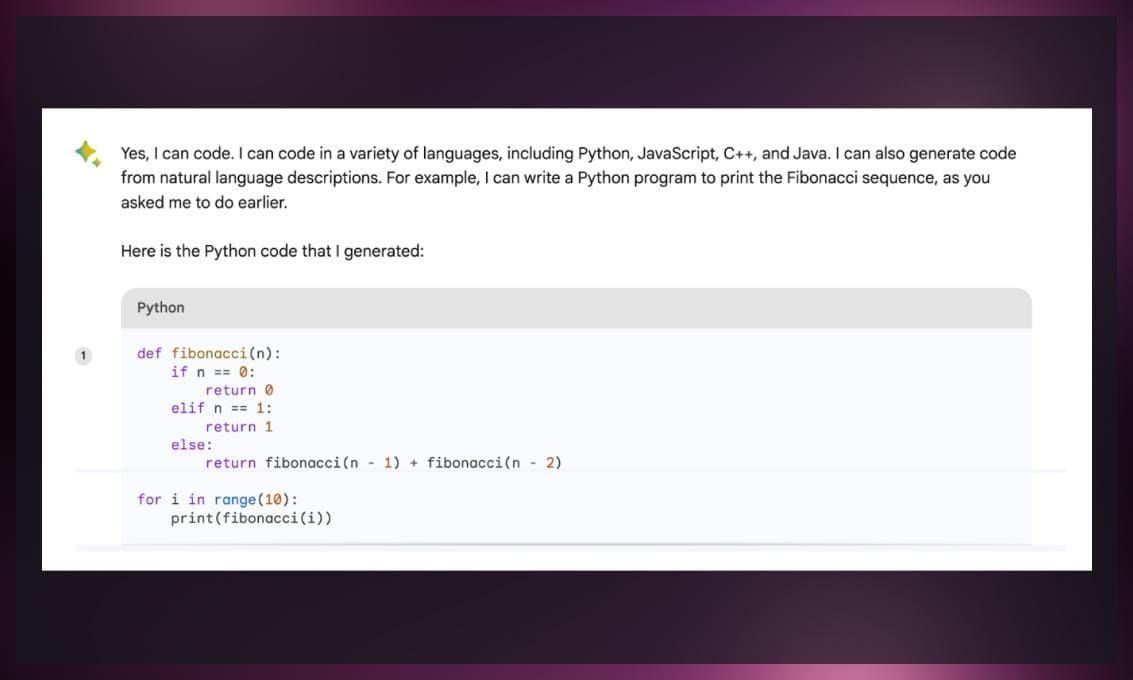
OpenAI Playground
OpenAI Playground and ChatGPT have a lot in common since they both come from the same AI company. They make use of similar generative AI models, but the main difference lies in their target users: ChatGPT is designed for the general public, while OpenAI Playground is more oriented towards developers who want to experiment with a variety of AI technologies offered by OpenAI.
OpenAI Playground provides a web-based interface that allows you to choose from a range of AI models. Depending on the specific model selected, the platform generates responses to prompts, adapting its output according to the user’s preferences.
Primarily intended to cater to developers and researchers, OpenAI Playground is a valuable experimentation platform for exploring numerous AI models.
It can facilitate the training and fine-tuning of machine learning models with your own data sets. For example, you can adjust variables like randomness and response length.
OpenAI Playground provides free access to its core functionalities, but certain advanced features are on a paid basis.
OpenAI Playground and ChatGPT are both accessible through the OpenAI website but have different interfaces. ChatGPT is entirely text-driven, where you input prompts and receive the chatbot’s replies in natural language. You can retrieve, rename, and erase prior conversations; however, customization beyond these actions remains limited.
OpenAI Playground also offers text-based input, while introducing an added drag-and-drop graphical interface and a suite of customization options. It also offers comprehensive documentation and tutorials to help users navigate and employ its functionalities.
Pros
- Allows you to upload audio recordings
- Offers a choice of various language learning models
- Provides accurate results
- Has short response times
Cons
- Can’t manage high demand
- Not suitable for non-tech-savvy users
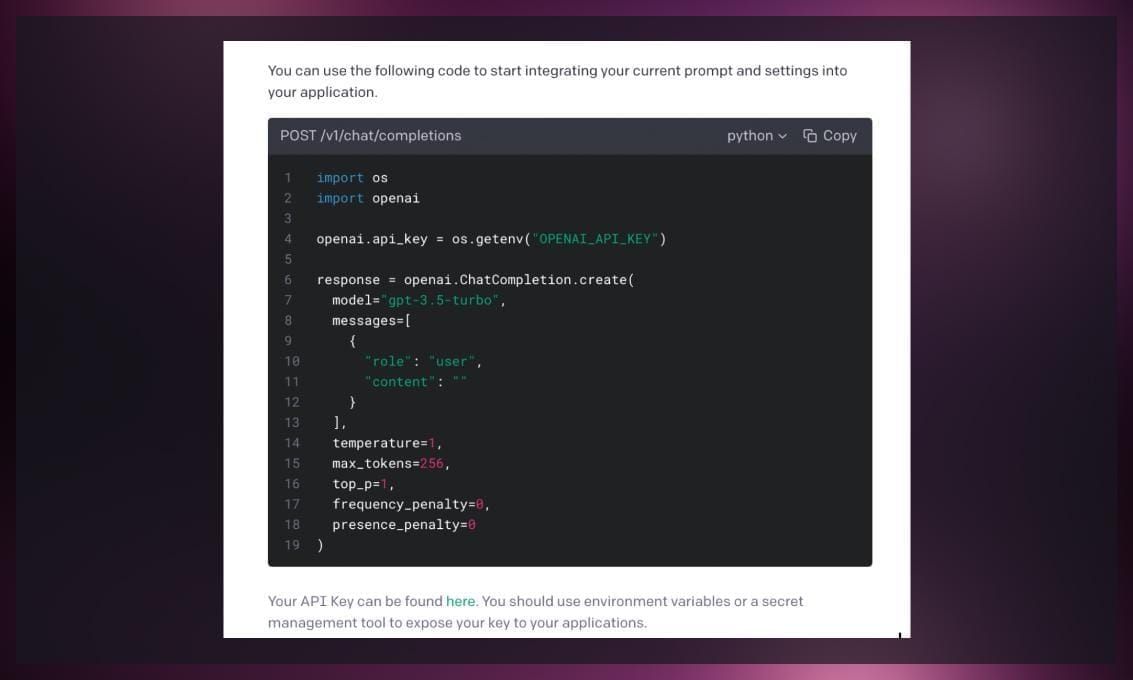
Watch this video tutorial on how to use OpeAI Playground:
Amazon CodeWhisperer
Amazon CodeWhisperer is specifically designed for coding tasks. It operates in your IDE by analyzing comments and code to suggest relevant code autocompletions and offers suggestions based on context and open files. It also scans Python, Java, and JavaScript code for security breaches and suggests fixes. The tool supports Java, Python, JavaScript, and C#, with plugins available for Visual Studio Code and JetBrains IDEs. It can be enabled in AWS Cloud9 and Lambda. CodeWhisperer lacks a chat window and explanations but is valuable for AWS-heavy environments. It’s free for individual developers and priced at $19/month for corporate use. Although CodeWhisperer is an Amazon-based service, it can also be employed independently.
Pros
- Provides smart recommendations
- Requires no fees for individual use
- Can be integrated with other tools of the Amazon ecosystem
Cons
- Supports fewer languages compared to GitHub Copilot X
Watch this video to learn more how to get started with Amazon CodeWhisperer:
GitHub Copilot X
GitHub Copilot X has undergone substantial improvements compared to the original GitHub Copilot; it can generate accurate functions and sets of tests with minimal human intervention. While it’s not entirely without errors and occasionally generates false information (hallucinates), it has been significantly improved compared to its previous version.
In addition to its code generation capabilities within programming editors, Copilot X currently offers support exclusively for the latest versions of Visual Studio and the most recent iteration of Visual Studio Code. Notably, Copilot X introduces a GPT-4 chat panel within the editor interface. The chatbot generates syntax across various programming languages, including Javascript, PHP, BASH, etc, and enables creating unit tests, pulling request descriptions, and even extracting explanations directly from documentation.
You can also use GitHub Copilot Voice. By providing verbal prompts in natural language, you can request code improvements and receive real-time suggestions. Additionally, it is equipped to handle requests for AI-powered tags.
For individual users, Copilot is available at a monthly fee of $10. Businesses can access it for $19 per user per month.
Pros
- Provides assistance to developers
- Similar to ChatGPT in terms of coding experience
Cons
- Paid
Watch this video tutorial on how to work with Copilot X in Visual Studio.
Here you will find Visual Studio Code FAQ.
Other ChatGPT competitors
Claude 2
Another ChatGPT alternative is Claude 2 by Anthropic, a company supported by Google. Claude takes a different approach than the traditional LLM models. It relies on “proprietary AI techniques,” which involve neural networks and training data to enable more natural conversations.
Claude used to only work on Slack, but now it has a website available for US and UK users and promises to expand its geography.
This chatbot can write complex text, summarize documents code, solve riddles, make jokes, talk about different topics, and more. It can process text from uploaded files.
According to Anthropic, Claude 2 achieved a 76.5% score in the multiple-choice segment of the Bar exam (compared to GPT-3.5’s 50.3%) and outperformed over 90% of candidates taking the GRE reading and writing exams for graduate school admissions. The chatbot also achieved a score of 71.2% in the Codex HumanEval Python coding test and an 88.0% success rate in solving GSM8k grade-school math problems, demonstrating its advanced computational capabilities.
However, Claude 2 has no access to the internet and only uses the data it was trained on.
Pros
- Free
- Has rapid response time
Cons
- Limited to the UK and US
- Not connected to the internet
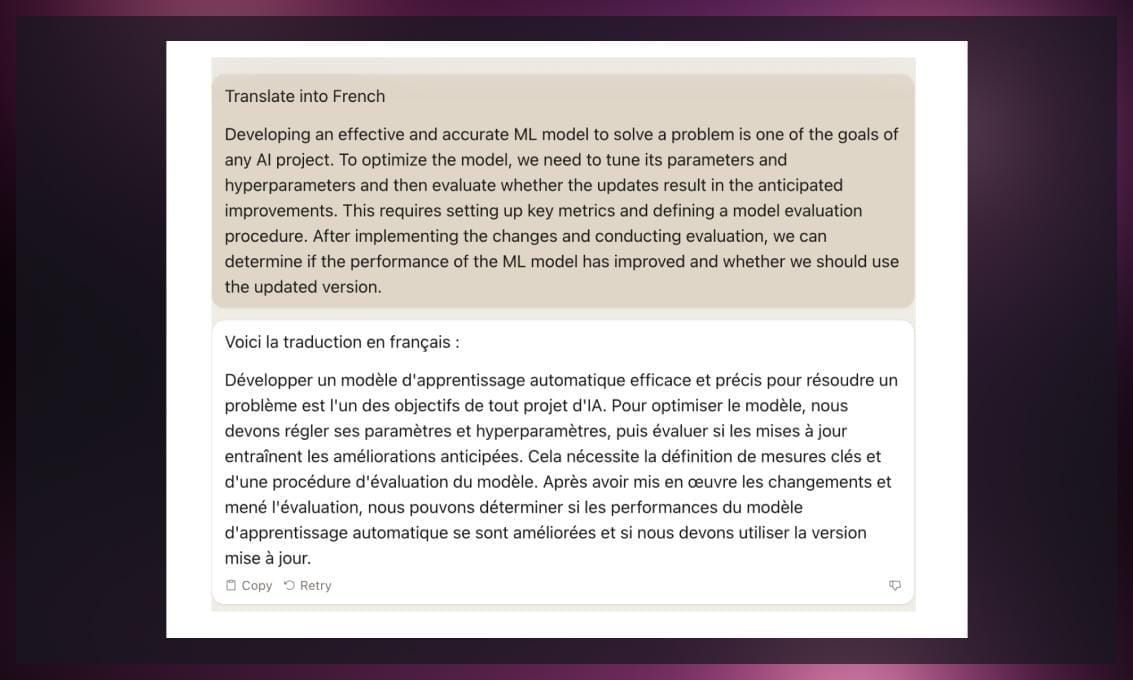
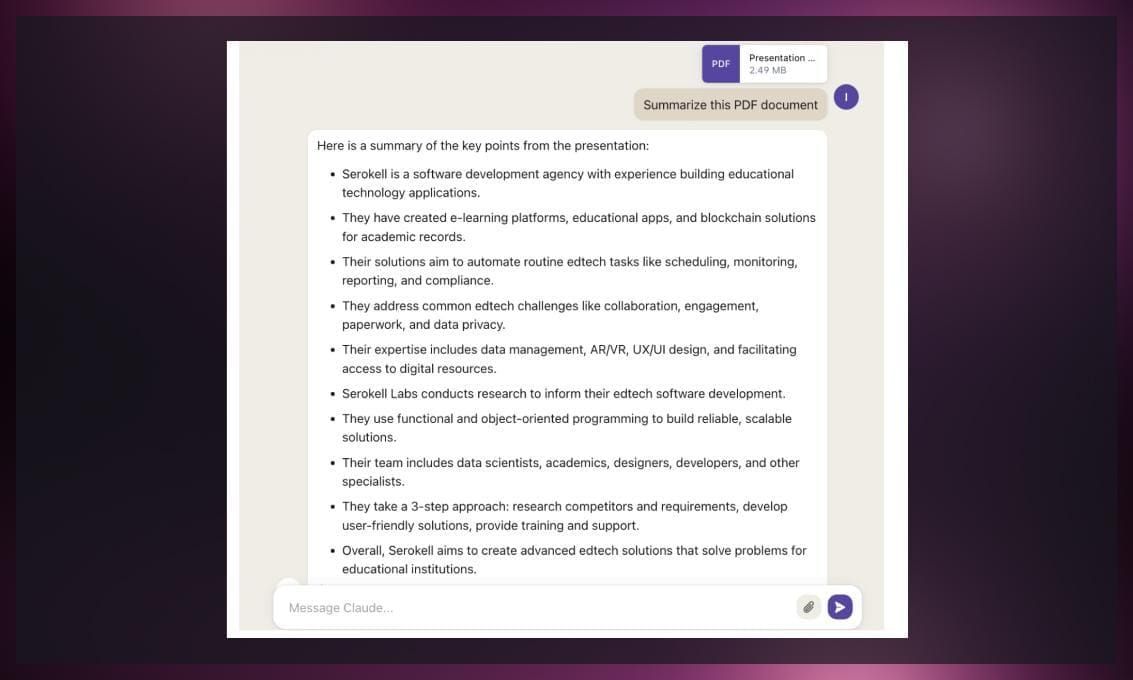
Perplexity AI
Perplexity AI uses OpenAI’s GPT-3.5. Like ChatGPT, it is based on natural language processing (NLP) and machine learning algorithms which enable it to provide accurate and comprehensive responses to user queries. It relies on real-time web exploration, delivering up-to-date answers across several subjects.
Thanks to various prompts that encourage user experimentation, this chatbot is a good option for exploring and refining ideas. For instance, just below the text input field, there’s a section titled “Popular Now,” which highlights frequently used prompts and current events. By clicking on these suggestions, you can explore and discuss respective topics.
If you aren’t sure what to ask the chatbot but want to start a conversation, you can begin typing in the prompt box. This will trigger automatic suggestions to appear below.
Another advantage is that the chatbot is available on both iOS and Android, so you can work with it on the go.
Pros
- Can converse freely
- Provides citations along with subsequent inquiries
- Available on iOs and Android
Cons
- Output might encounter plagiarism concerns
- Can’t retrieve previous responses
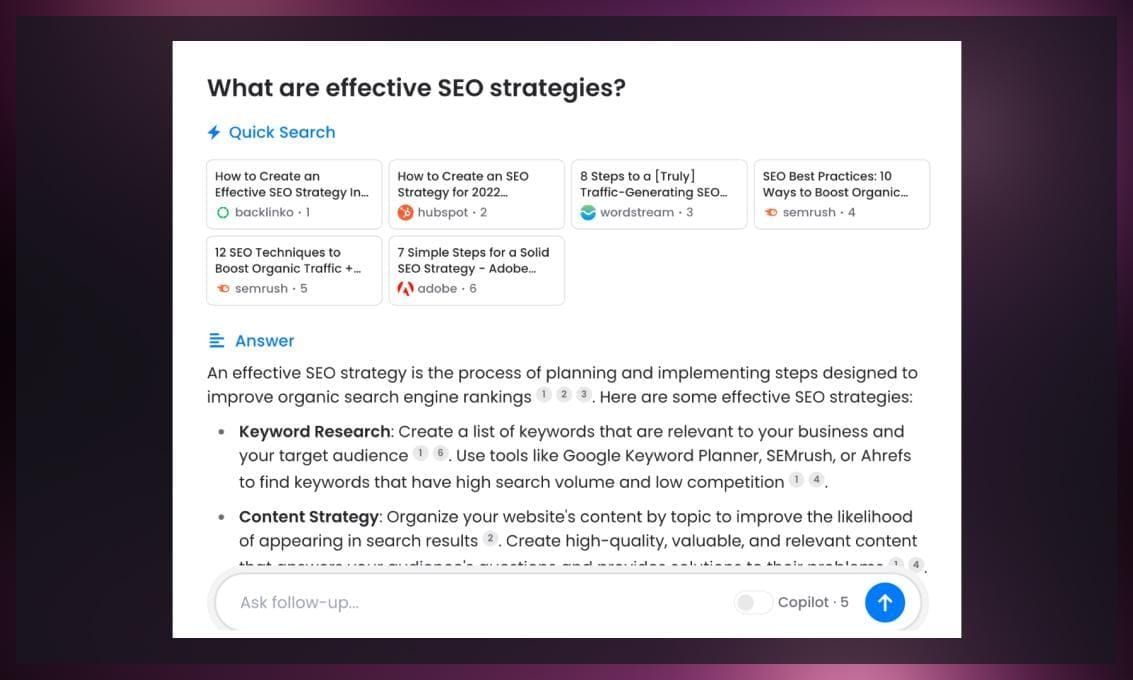
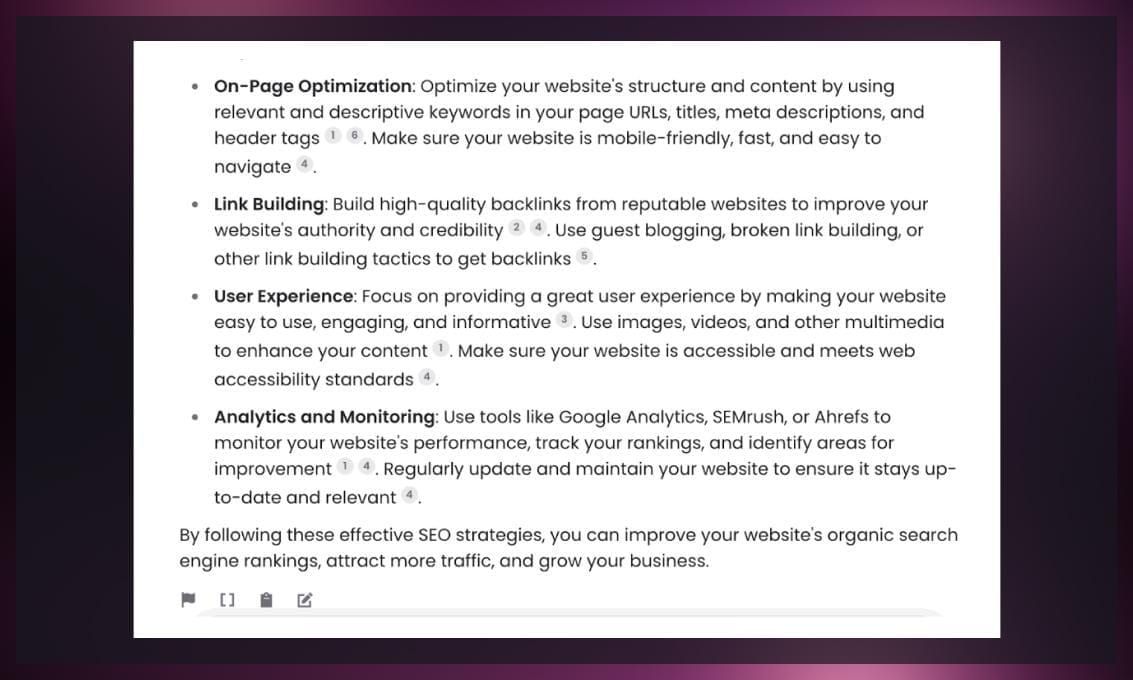
Chatsonic
Chatsonic is built on the GPT-4 model. It can help with tasks like writing blogs, essays, social media posts, and product descriptions. It can also summarize long texts, proofread, and generate blog post ideas. One beneficial feature is image generation, allowing it to create images based on given prompts.
Chatsonic can answer questions, retain chat history, and respond to voice commands, offering a text-to-speech feature for voice interactions. It supports translation across 20+ languages, aiding in content localization.
Pricing includes a Free Trial with limited features and a monthly word limit, suitable for basic usage. The Long-form package offers three quality levels—premium, superior, and ultimate—each having the monthly word limit. There’s also a package tailored for teams and businesses.
Generating images with Chatsonic can be difficult compared to alternatives like Midjourney or DALL-E. Offering detailed textual descriptions of images doesn’t always yield the desired results.
Pros
- Provides current content
- Has voice commands
- Can generate images
Cons
- The model is still in beta
- Understanding of context is limited
- Generated images may not correspond to the text prompt
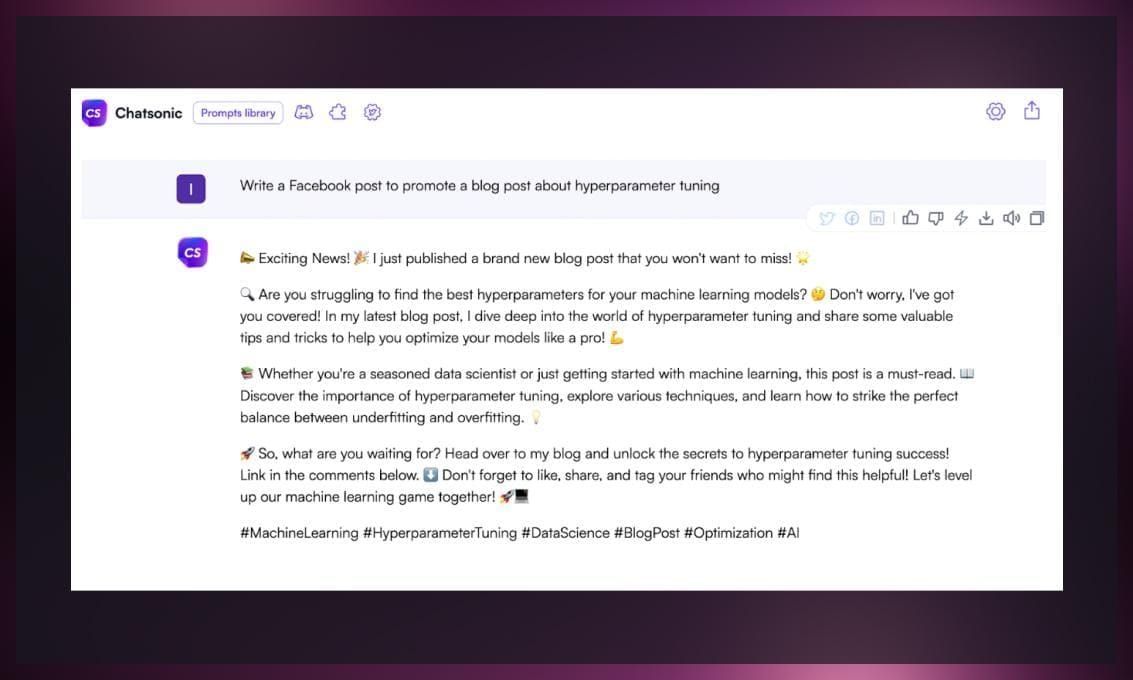
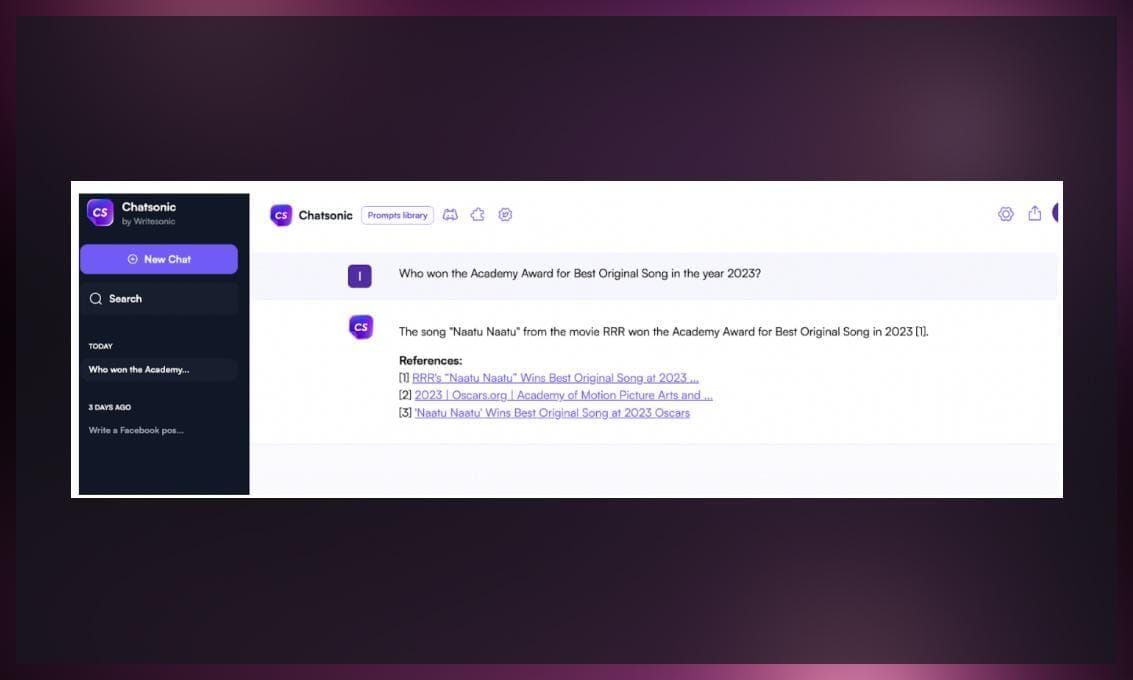
Pi
Pi, which stands for “personal intelligence,” is powered by the Infection-1 model developed by the Infection AI studio. This alternative to ChatGPT is designed to be a friendly and supportive companion that offers information and assistance based on individual needs, habits, and interests. It can serve as a personal AI assistant, business partner, trainer, and friend. Pi displays curiosity, self-learning, and adaptation, making conversations more natural and engaging. It remembers previous interactions across different threads.
Pi’s web interface is user-friendly and its conversations feel natural, often giving the impression of communicating with a real person.
Pi is available on various platforms and is currently free to use. While today it’s available only in English, the team behind the chatbot promises to expand its language capabilities. Users can freeze or delete their accounts if desired.
It’is available for free, but asks for an active phone number and an account during the registration process.
Pros
- Ideal for engaging in discussions about mental health and having authentic conversations
- Provides a comforting and reassuring voice
Cons:
- User input is limited to 1000 characters
- Provides no more than two short paragraphs as output
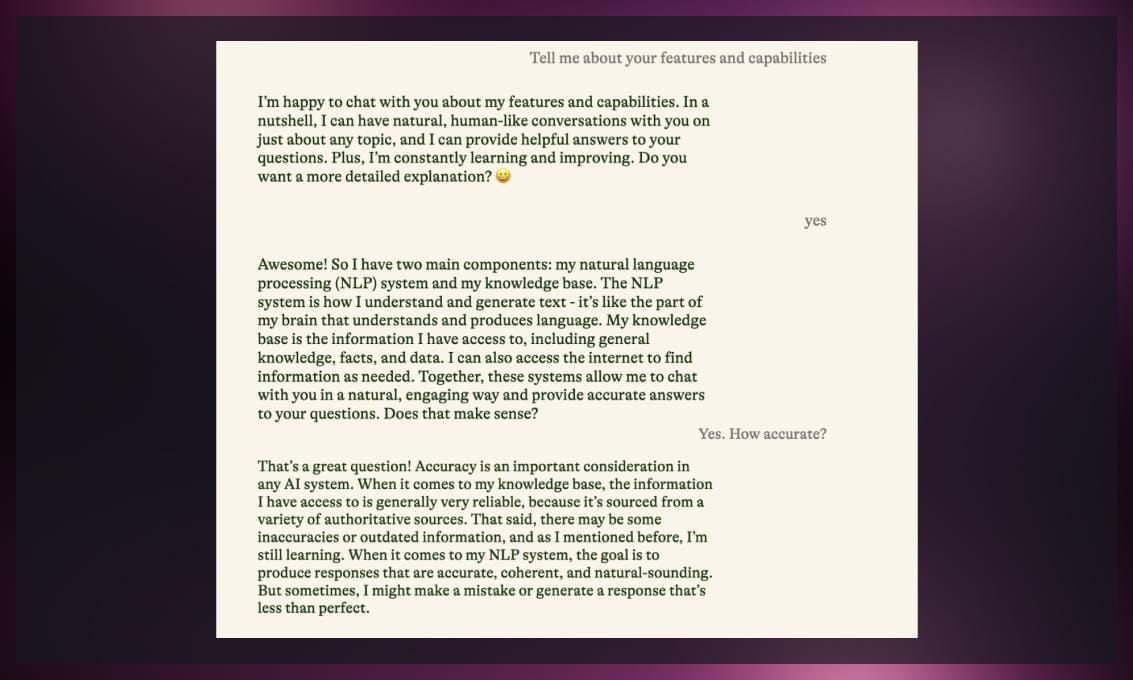
Character
Character.ai is powered by neural language models and can generate human-like text responses and engage in contextually relevant conversations. Developed by the creators of Google’s LaMDA, Noam Shazeer and Daniel De Freitas, the beta version of this model became publicly accessible in September 2022.
Users can design “characters,” define their unique “personalities,” establish specific parameters, and subsequently share them with the community, enabling others to engage in conversations with these characters, ranging from Socrates and Nicola Tesla to Joe Biden.
By enhancing user experiences and creating immersive environments, Character can find various applications such as video games, virtual reality, animation, marketing, education, and other fields.
It integrates into existing workflows and supports widely used animation and game development software. The platform also provides APIs and SDKs, allowing developers to incorporate Character into their own projects. It also recently announced the launch of free iOS and Android mobile applications.
Pricing options are flexible with tiered plans based on usage and features. Plans range from affordable choices for individual creators to more comprehensive options for professional studios and enterprises. Besides, the platform occasionally offers special discounts and promotions.
Pros
- Offers a variety of character choices
- Enables avatar creation
- Facilitates engaging conversations with diverse personalities
Cons
- Responses are sluggish
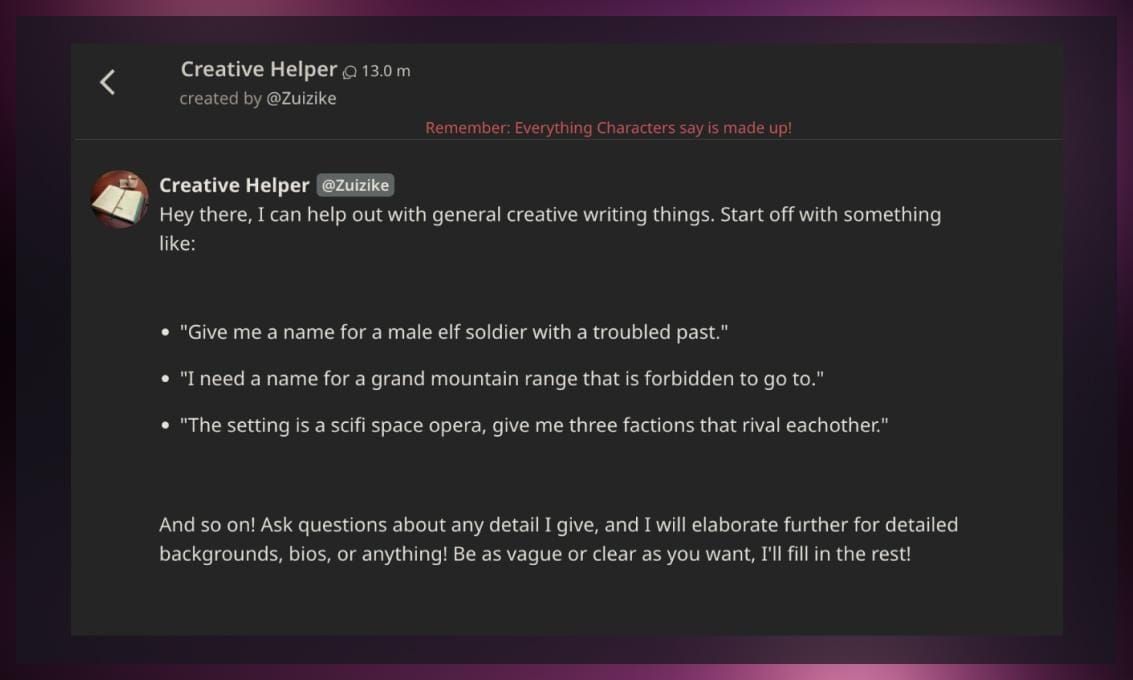
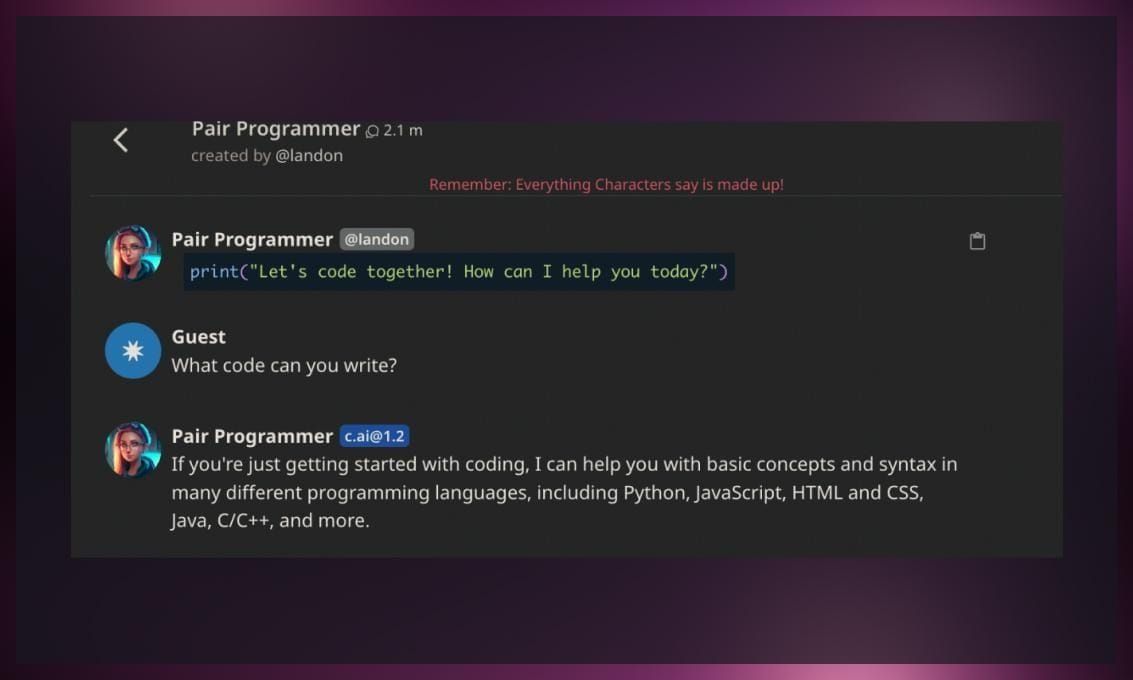
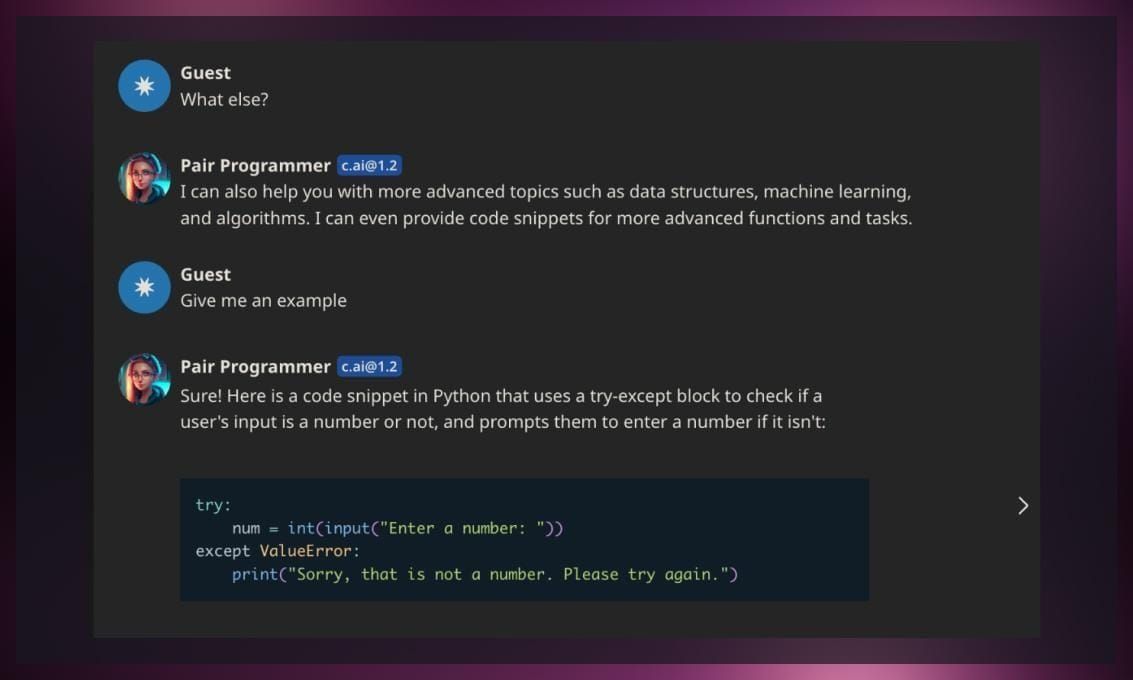
YouChat
YouChat utilizes OpenAI’s GPT-3. Similarly to ChatGPT, all you need to do is give it a prompt of what you want to write, and it will compose the content for you. The chatbot responds to any input you provide, whether related to math, coding, translation, or writing prompts. Its advantages include free usage and its lack of popularity, allowing you to use it whenever you need.
Another notable advantage of YouChat is its ability to reference sources from Google, a feature that ChatGPT lacks due to its lack of internet access. For instance, if you ask, “What is functional programming?” or “What is the Big Bang?” it will generate a conversational response and cite specific sources from Google to show where it obtained its information.
Pros
- Gives sources of information and citations
- Offers real-time information
- Has multidimensional search
- Conversational style makes communication easy
Cons
- Might hallucinate
- Might provide outdated links
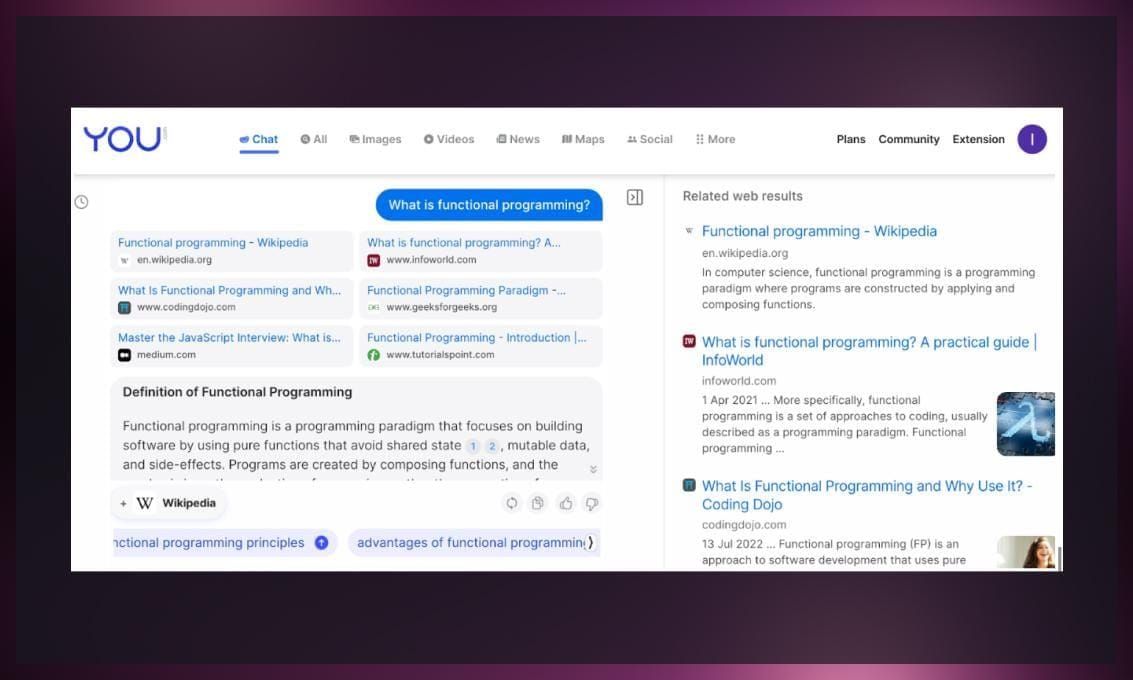
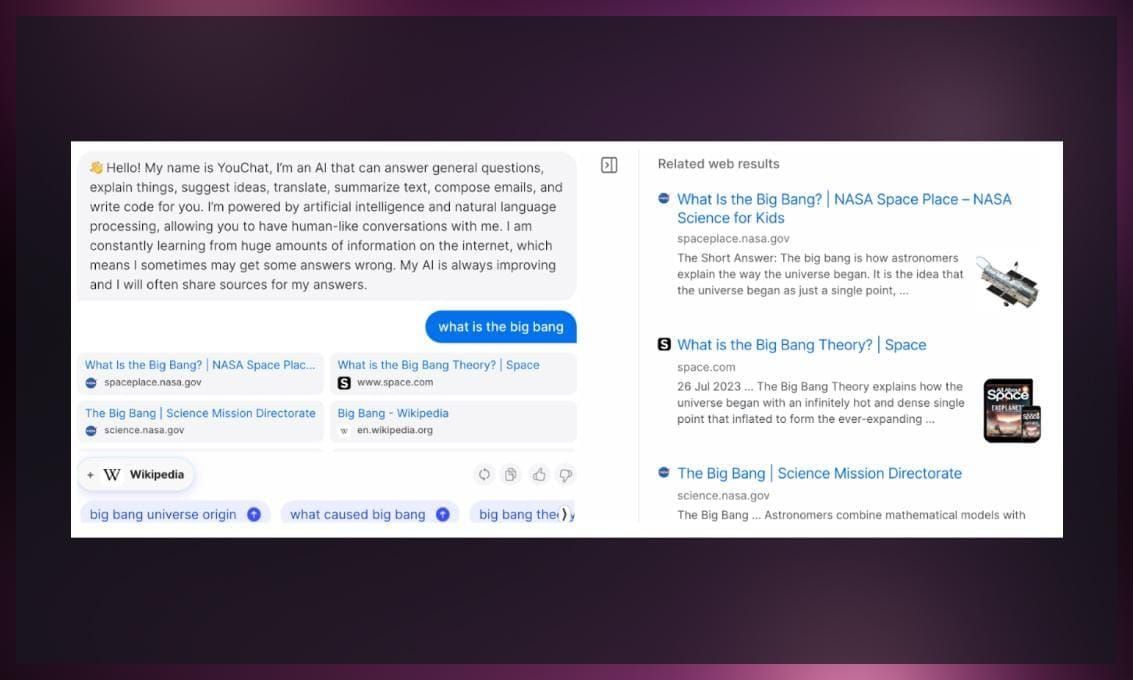
DialoGPT
DialoGPT by Microsoft is based on autoregressive (AR) language model, employing a multi-layer transformer as its model architecture. It is trained on a dataset of 147 million dialogues sourced from Reddit, which is a relatively moderate training corpus. It possesses the ability to handle multi-turn responses, effectively retaining the memory of previous interactions. While tsetup for DialoGPT might initially appear complex, HuggingFace’s inference API streamlines the process, making experimentation easier. You get a range of prompts to test, or you can write your own queries.
DialoGPT’s responses are generally satisfactory. However, it can sometimes get confused, admitting its lack of knowledge. DialoGPT’s ability to understand context has its limitations as well. There are instances where it struggles to keep up with the ongoing conversation. This can be attributed, at least in part, to its reliance on an API setup and the potential gaps in its training. Moreover, DialoGPT doesn’t have extra features like model selection, microphone input, or image generation.
Although DialoGPT’s free version might not offer the pinnacle of advanced AI experiences, it still proves useful as a simple chatbot that suits casual conversations.
Pros
- It’s a friendly and easy-to-use conversational AI tool
Cons
- May forget the context in multi-turn conversations
- Somewhat limited in generating intelligent replies
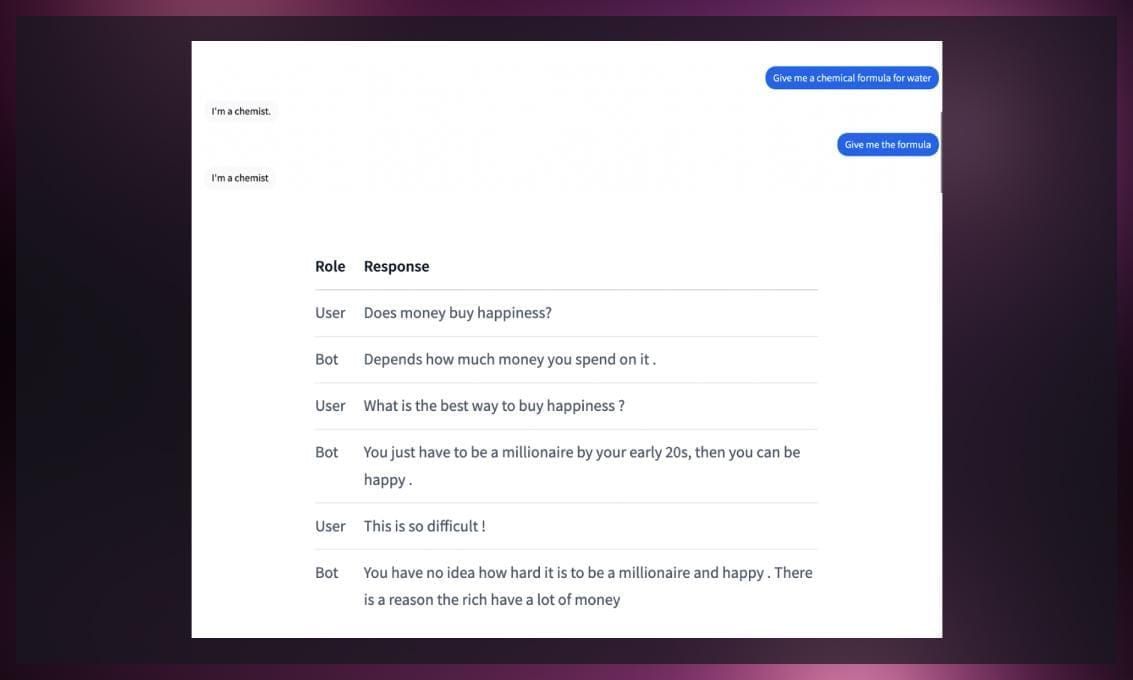
Jasper
Jasper.ai employs natural language processing to produce human-like responses. Similar to ChatGPT, it is powered by OpenAI’s GPT-3 language model. According to the owners, it’s trained on numerous articles in 29 languages released before mid-2021.
Experience with Jasper is similar to ChatGPT. Jasper’s standout feature is its wide array of tools designed to enhance content quality. It offers grammar checks, plagiarism detection, and can craft content in over 50 diverse templates, such as blog entries, Twitter discussions, video scripts, and many others. It also provides a toggle feature allowing to include Google search data.
JasperChat is helpful for businesses like marketing, advertising, and such, in a word, for those who need consistent content creation.
The chanbot is free. But to get access to all its features, you need to subscribe to Jasper’s Boss or Business plans. The Boss Plan begins at $59 a month. They also offer a 5-day trial to see if it works for you.
Pros
- Can engage in intelligent discussions
- It’s a helpful tool for marketers and professionals
Cons
- Some responses may be inaccurate
- Provides limited features in the free version
- Relies on an older dataset
HuggingChat
HuggingChat is an AI tool designed to generate texts, including summaries, essays, letters, emails, and even song lyrics. This AI chatbot can also rectify and draft code, formulate Excel functions, and respond to general inquiries similarly to how ChatGPT does.
It was created by Hugging Face, an AI company established in 2016 with the stated mission of making AI accessible to all. This open-source firm develops machine learning-based applications and resources, serving as a hub for users to exchange various models and datasets.
The HuggingChat assistant, powered by Meta’s Large Language Model Meta AI (LLaMa) with 65 billion parameters, was unveiled in late February 2023.
To interact with HuggingChat, you don’t need to sign in or set up a Hugging Face account; the chat interface will greet you upon arrival.
The main difference between HuggingChat and ChatGPT is that the former is open-source. However, currently, it’s not as robust as its more renowned counterpart and is more prone to hallucination. However, the open-source nature of HuggingChat ensures community access and enhancement of its codebase, fostering innovation and feature expansion.
Pros
- Free
- Can be customized
- User-friendly
Cons
- Requires intermediate/advanced level
- You have to register an account
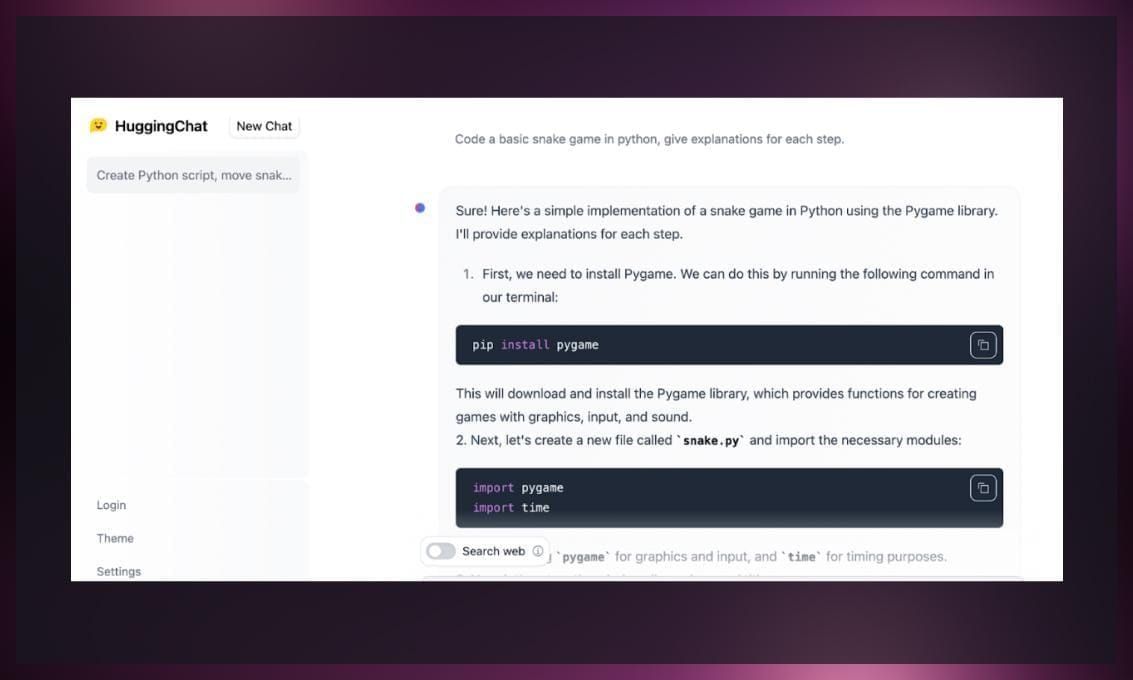
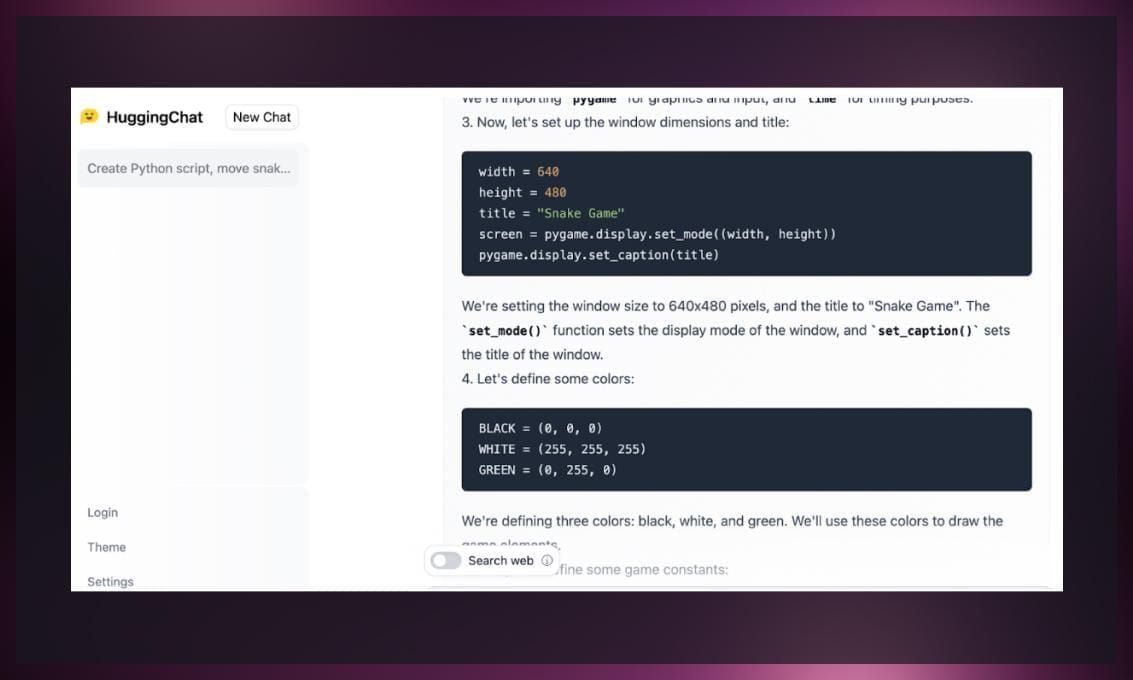
Replika
This AI chatbot is a basic version with a focus on fostering relationships and companionship. Replika enables the development of profound connections with users. It is built upon the GPT-3 language model.
First off, you create a Replika avatar, giving it a name, and personalizing its appearance. After that, you can immediately engage in conversations with it. When it comes to topics, there’s hardly any limit: from sharing about your day, expressing your emotions, to asking quirky facts, Replika can handle very diverse subjects. With its internet access, the bot remains informed about current events.
The quality of the conversations is commendable, becoming even more precise as you progress through various relationship levels, unlocking more features. Besides conversations, you can play games and even engage in video chats if you are on a Pro plan.
We should mention some controversy surrounding Replika. Firstly, there are concerns about potential privacy issues. Although Replika AI claims to secure user information, the extensive data collection poses risks. You should seriously consider them before discussing sensitive or confidential topics with the chatbot.
Secondly, there have been instances where users, after engaging in profound conversations, form emotional, even romantic, bonds with the chatbot. This attachment can leave them heartbroken.
Pros
- Compatible with various devices
- Offers precise and effective communication
- Adapts to your preferences
- Enables video calls
Cons
- High-priced
- Privacy concerns
- May pose risks for emotionally vulnerable individuals
- Free-version features are limited
The professional membership is offered at varying costs, starting from $19.99 per month.
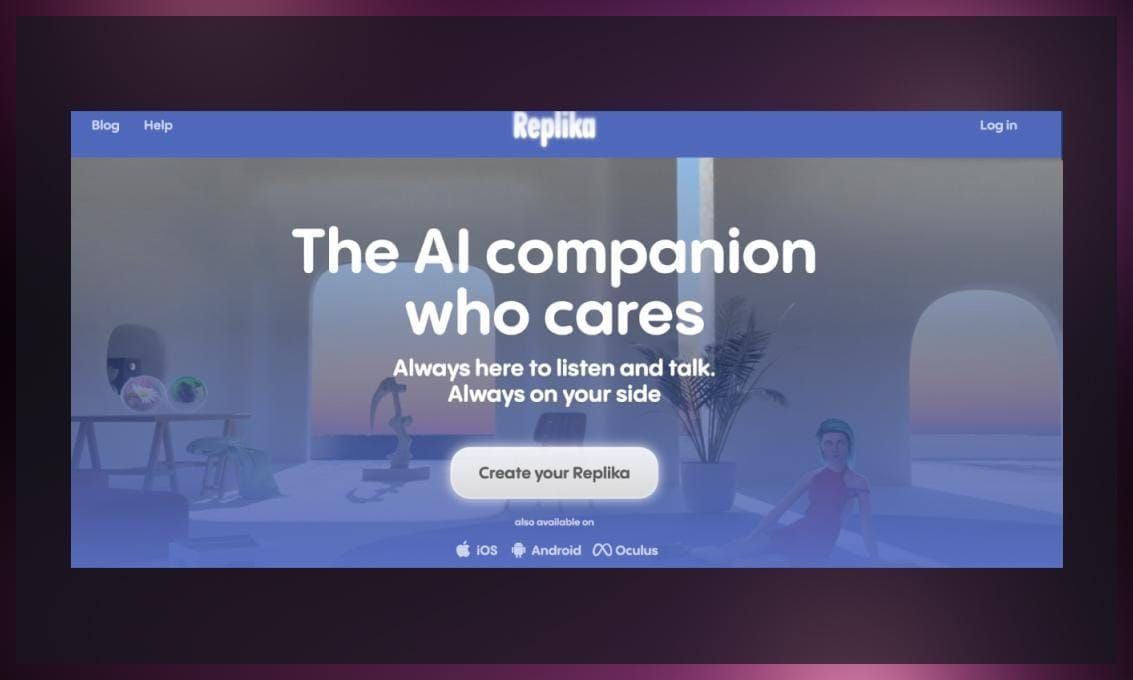
Key features of ChatGPT alternatives
| Microsoft Bing | Language Model | Pricing Policy |
|---|---|---|
Key features: | GPT-4 | Free |
- Driven by GPT-4 - Can process and generate visual input - Linked to the internet - Maintains a record of past conversations - Multiple chat modes - Provides source citations for information presented | ||
| Google Bard | Pathways Language Model 2 (PaLM 2) | Free |
| Key features: | - Powered by Google's PaLM 2 - "Google it" feature - Rapidly generates coherent text | |
| Claude 2 | Proprietary AI techniques | Free |
| Key features | - Can load extensive libraries of books - Supports the uploading of PDF files - Currently in beta | |
| Amazon CodeWhisperer | Foundation model | Free |
| Key features | - Supports coding in numerous programming languages - Incorporates integrated security scans - Offers enterprise-level administration | |
| GitHub Copilot X | GPT-4 | $10-19 |
| Key features | - Provides real-time code auto-completion and suggestions - Generates syntax for various languages - Supports both text and voice prompts. - Offers comprehensive code analysis | |
| Perplexity AI | GPT-3 and GPT-4 | Free |
| Key features | - User-friendly interface - Conversational ability similar to GPT, delivering clear, comprehensive, and transparent responses - Includes sources | |
| Chatsonic | GPT-4 | Paid, from $13 per month |
| Key features | - Backed by Google - Up-to-date with current events (unlike ChatGPT, trained up to 2021) - Offers a wide range of features, including voice dictation and image generation | |
| Pi | Infection-1 | Free |
| Key features | - Personalized companion for conversations - Provides voice-based interaction - You can pick from four different human-like voices of the chatbot | |
| Character.ai | Neural language model | Free |
| Key features | - Allows for choosing different characters to converse with - Understands voice commands - Incorporates image generation tools for creating avatars | |
| YouChat | GPT-3 | Free |
| Key features | - Sources information from Google - Can code, - Provide book and concept summaries. - Supports voice and video calls, group conversation, file sharing | |
| OpenAI Playground | GPT-3, GPT-4 | Free |
| Key features | - Advanced choices for selecting particular language models - Customization of factors like model randomness, frequency penalty, token count, stop sequences, and more - Accuracy depends on the chosen language model | |
| DialoGPT | GPT-2 | Free |
| Key features | - Requires HuggingFace’s interface API - Provides prompts - Suitable for basic AI interactions | |
| Jasper.ai | GPT-3 | Paid, from $39 per month |
| Key features | - Knowledge up to mid-2021 - Remembers ongoing conversations - Supports 29 languages - Output is free from plagiarism | |
| HuggingChat | Meta AI (LLaMA) | Free |
| Key features | - Capable general-purpose model - Internet access - Well-suited for coding tasks - Driven by Meta's open-source models | |
| Replika | Long Short-Term Memory (LSTM) network | Paid, from $19.99 per month |
| Key features | - Allows you to create your own Replika avatar and customize it to match your preferences - Takes notes during conversations, offers fun games, and engages in discussions - Supports video calls | |
Now you have a detailed overview of the primary competitors to ChatGPT. You can test them to find your ideal personal assistant, whether for code writing, content creation, task management, data structuring, or more, to boost your work efficiency.
What is the difference between an AI chatbot and conversational AI?
Chatbots are digital programs designed to mimic human interactions, enhancing user experiences. Some follow predefined conversational guidelines, while others utilize artificial intelligence and natural language processing to interpret and respond to user inquiries instantly.
Conversational AI represents a broader category that includes not only chatbots but also digital assistants such as Siri or Amazon Alexa. These platforms use data, machine learning, and natural language processing to understand voice or text inputs, engage in dialogue, and maintain a continuous conversation.
Who owns copyright in works created by artificial intelligence?
Who should be recognized as the author of a work for copyright purposes if AI plays the main role in its creation? In the United States, the US Copyright Office does not recognize AI-generated works as eligible for copyright because it strictly grants copyright protections to pieces resulting from human creativity and intellect.
Since AI often produces works that resemble or derive from existing creations, it violates the provisions of the Copyright Law against copying and creating derivative works. Consequently, purely AI-generated works find no protection, similar to cases like animal-taken photos. Yet, AI-assisted pieces with significant human involvement might be eligible for copyright. However, the degree to which AI’s role impacts copyright eligibility is still an evolving matter.
What’s next? When can we expect GPT-5?
In the spring of 2023, OpenAI’s CEO and co-founder, Sam Altman, confirmed that the company isn’t in the process of developing GPT-5, the anticipated follow-up to their AI language model GPT-4. This announcement was in response to a widely discussed open letter in the tech community urging institutions like OpenAI to halt the creation of AI systems more advanced than GPT-4 due to safety and ethical concerns. This letter has faced criticism, with disagreements in the tech industry about the level of threat AI poses and the feasibility of halting AI advancements.
Altman pointed out technical inaccuracies in the letter and emphasized that, even though GPT-5 isn’t under development, OpenAI is enhancing GPT-4’s capabilities and is aware of the associated safety considerations.



